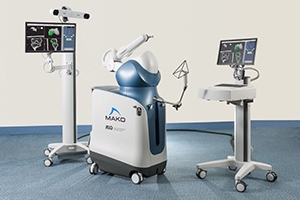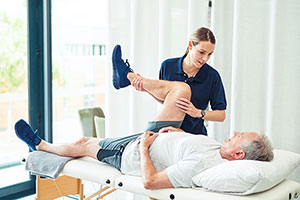Your hip is a ball and socket joint that bears your body’s weight while allowing you to walk, run, and jump simultaneously. It pinned the name because it’s a joint where the ball-like femoral head (the highest part of your thigh bone) meets and moves within your pelvis at the acetabulum.
But while this unique anatomy makes your hip stable, strong, and flexible enough to support your movements, it can still be affected by various problems due to overuse, physical activities or injuries.
With that said, we usually associate hip conditions with age. But while it’s true that hip pain becomes increasingly common in people aged 50 and above, hip conditions in young adults are not out of the ordinary.
The catch is that hip pain in older people is usually caused by arthritis, lower back problems or other wear-related concerns. Meanwhile, the causes of hip problems in younger men and women often vary greatly. This means that these conditions bring about varied symptoms and require different treatments.
Signs and Symptoms of Hip Problems in Young Adults and Athletes
While pain is the most obvious indicator of hip problems, it’s not present all the time. The signs you may experience will vary depending on your hip condition, and you may have other symptoms, such as the following:
- Swelling and tenderness of the hip
- Shooting, electric shock-like pain or numbness
- Pain in the buttocks
- A snapping sensation around the hip joint
- Muscle stiffness
- Limping
- Reduced movement in the hips
If these symptoms persist and start affecting your daily activities, consider having your case diagnosed and seek treatment. Understanding the causes of hip problems you’re experiencing will help you get on the road to swift and effective recovery.
Common Hip Conditions in Young Adults and Athletes
Let’s look at some common hip pain conditions affecting young adults and hindering their functional or athletic performance.
Labral Tears
A ring of cartilage runs along the edge of your hip joint socket called the labrum. Its primary function is to absorb shock and hold the femoral head securely within the acetabulum, allowing you to move without pain or problems
So when the labrum tears, the hip joint loses stability and lubrication. Eventually, this can cause deep, sharp pain in the hip or groin, a locking sensation in the hip joint, feelings of instability, weakness and reduced motion. It can eventually necessitate hip replacement if left untreated, even in young adults.
Labral tears can be caused by various factors such as structural ailments like femoro-acetabular impingement (FAI), trauma to the hip in high-impact sports and degenerative health conditions.
Proximal Hamstring Tear
Your hamstrings comprise four muscles on the back of your thigh, and they work together to support healthy knee function and effectively bear your weight. They’re attached to tendons, which are then attached to a part of your pelvis called the ischial tuberosity, also called the sitting bones.
Proximal hamstring tear happens when one or more tendons become torn from their attachment to these sitting bones. This condition often causes persistent pain in the buttocks with prolonged sitting, cramps, weakness, poor leg control and limping.
Proximal hamstring tears are common hip pain conditions among athletes in soccer, football, basketball and gymnastics.
Athletic Pubalgia
While this condition is sometimes referred to as sports hernia, it’s technically not a hernia. Instead, it’s a tear in the muscles in your lower abdomen, groin or pelvic region.
Its symptoms vary, but they usually include chronic pain, pain during sports activities, tenderness in the groin, upper thigh, or lower abdomen and muscle weakness.
Sports hernia is among the common hip conditions in young adults and athletes who engage in sports that require sudden twisting or vigorous moments such as ice hockey, soccer, tennis, and skiing. However, you don’t have to play a sport to get athletic pubalgia.
Femoro-Acetabular Impingement (FAI)
Also called hip impingement, this is a condition in which either the ball or socket portion of the hip joint is malformed. Hip movements then cause the femoral head and acetabulum to rub together painfully, eventually damaging the labrum that cushions the joint.
Abnormalities in the ball or the socket are usually present at birth, but they can develop later in life. Moreover, athletes or physically active young adults may experience FAI symptoms such as hip pain, limping and stiffness in the hip earlier than those who are not as active.
FAI must be treated promptly; otherwise, it can cause labral tears and even advance osteoarthritis.
Hip Instability
As mentioned earlier, your hip joint possesses unique anatomy to support your weight and allow you to move freely. However, if your thigh bone, hip bone, labrum, or the ligaments of your hip joint sustain any injury or damage, it may lead to hip instability.
Hip instabi>lity can either be traumatic or chronic. Traumatic instability can be caused by motor vehicle accidents or injuries from athletic events. On the other hand, chronic instability can be caused by overuse of the hip joint or developmental abnormalities of the joint.
Conservative treatment such as protected weight bearing and physical therapy are usually the first steps to address hip instability. However, if these measures fail to properly correct the hip condition, your doctor may consider surgery.
Treating Common Hip Pain Conditions
If you have suffered hip trauma or are experiencing any hip pain, it’s best to seek treatment right away. Having your hip condition diagnosed promptly and properly will put you on the right path towards effective treatment and, ultimately, a faster recovery.
It’s normal to be concerned about the possibility of undergoing joint replacement surgery for your hip problem. The good news is that most problems can be treated conservatively through over-the-counter pain medicines, physical therapy, and rest. Moreover, there’s a minimally-invasive procedure available called hip arthroscopy that can treat hip issues without making large incisions through the skin.
Ultimately, if you have a severe hip condition, our orthopedic specialists will discuss your surgical options with you and help you determine the best one for you and your needs.
Let the American Hip Institute Help You Get Back in the Game
While home remedies can resolve some common hip pain conditions, it’s better to address persistent symptoms by seeking expert medical advice. Especially if you have recently sustained an injury or a bad fall, building a personalized treatment plan with orthopedic experts will enable you to recover and return to your work or sport as quickly and safely as possible.
At The American Hip Institute, we offer innovative and cutting-edge hip treatment and solutions. But most importantly, we treat all our patients like professional athletes, giving them the best care possible so they can return to their top-level performance. Let our orthopedic specialists alleviate your pain and help you get back in the game. Contact us today to schedule your appointment.




